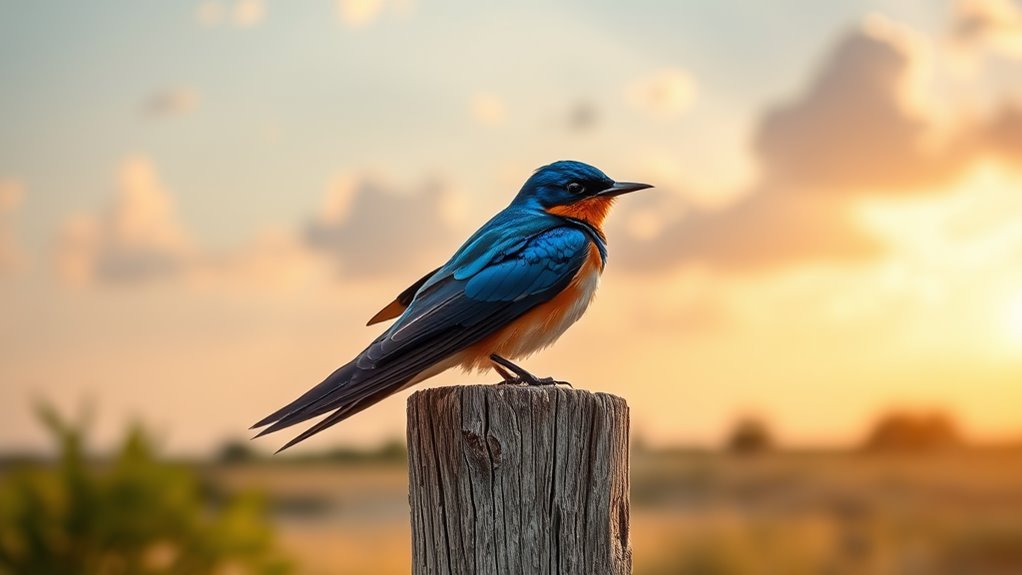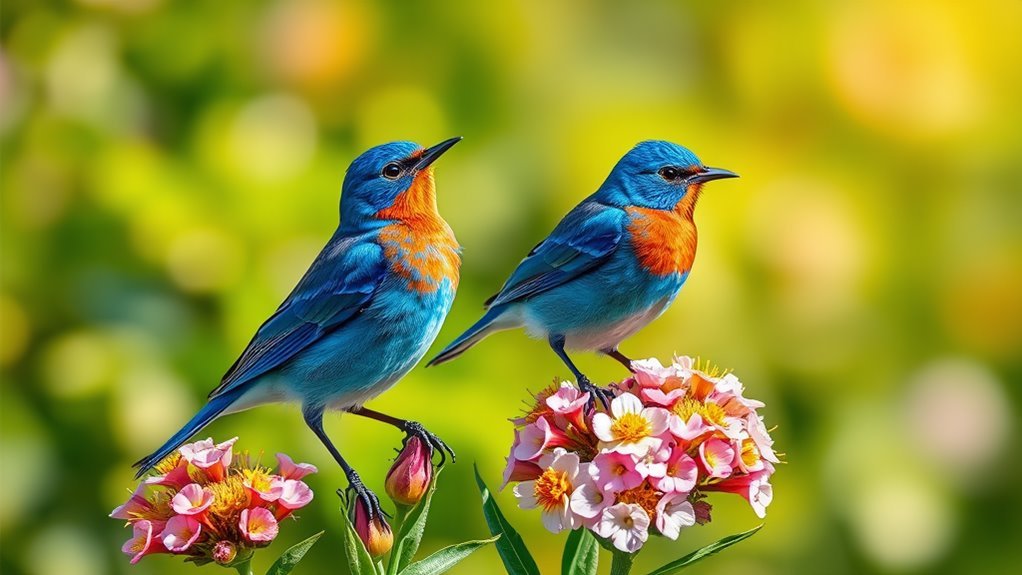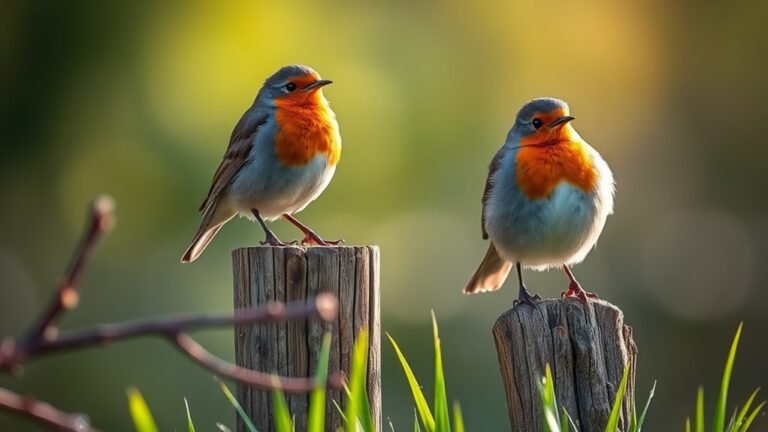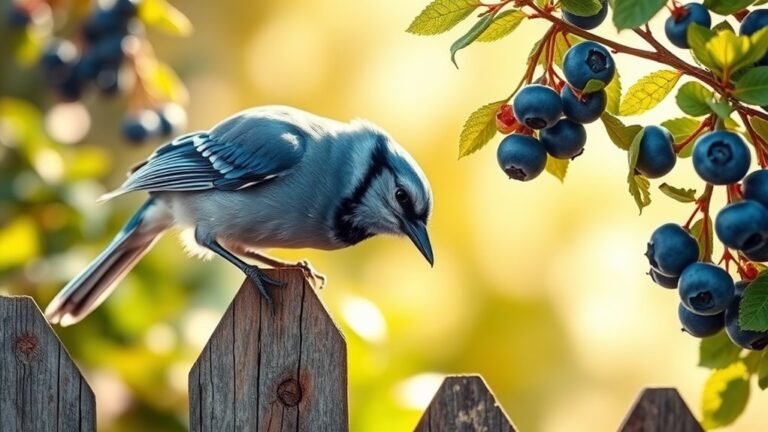15 Beautiful Blue Birds of Texas
In Texas, you will see many blue birds that highlight the state's diverse environments. The Eastern Bluebird and the Blue Jay are two notable examples. Each bird has unique behaviors and traits that help them survive. Watching these birds interact in their habitats can teach you about their roles in nature. Discovering these 15 beautiful blue birds reveals their importance in the ecosystem and their representation of the beauty of bird life. Enjoy learning about these fascinating creatures and their impact on Texas's landscape.
Key Takeaways
Texas is home to many beautiful blue birds. Notable species include the Eastern Bluebird, Blue Jay, and Indigo Bunting. Each bird adds charm to the landscape.
Blue birds like the Blue Grosbeak and Lazuli Bunting display striking colors and interesting behaviors. They enhance outdoor experiences for birdwatchers.
Waterbirds such as the Tree Swallow and Barn Swallow feature stunning blue-black and blue-green feathers. They play an important role in maintaining ecosystem balance.
The Great Blue Heron and Blue-winged Teal offer captivating views with their blue features. These birds inhabit wetlands and marshes.
Songbirds like the Black-throated Blue Warbler and Purple Martin enrich Texas with their beautiful calls and vibrant colors. Their presence adds to the enjoyment of nature in the state.
Eastern Bluebird

The Eastern Bluebird is a well-known species in Texas. Its bright colors and beautiful song attract many observers. You can find Eastern Bluebirds in open woodlands, farmland, and parks, which are their favorite habitats.
They often use tree cavities or man-made nest boxes for shelter. Their diet consists mainly of insects and berries. This diet helps control pests and disperse seeds, making them important for the ecosystem.
Watching how they feed shows the balance they maintain in nature. The presence of the Eastern Bluebird makes outdoor experiences more enjoyable and connects people to nature.
Whether you're birdwatching or taking a walk, the Eastern Bluebird adds value to Texas landscapes.
Blue Jay
While exploring the landscapes of Texas, you may see the striking Blue Jay. This bird is known for its bright blue feathers and intelligence. Blue Jays live in various habitats, such as oak forests, suburban areas, and parks.
As you watch them, notice their behaviors:
- A bright blue flash against green leaves
- Loud, melodic calls echoing in the trees
- Flipping leaves to find insects
- Playing with other jays
- Using acorns to store food
The Blue Jay's adaptability and social nature benefit the Texas ecosystem. They create connections among birdwatchers and nature lovers.
Enjoy sharing these moments in nature with others.
Indigo Bunting

Seeing an Indigo Bunting in Texas brings joy to birdwatchers and nature lovers.
These bright blue birds are often found in fields and near wooded areas, where they eat seeds and insects. Their unique song consists of sweet, melodic notes that signal the arrival of spring.
During migration, Indigo Buntings travel thousands of miles from Central America to North America. They usually arrive in Texas to find breeding grounds.
Watching their courtship displays, like fluttering and soaring, shows their social behaviors.
Learning about their migration and habits can help you appreciate this beautiful species and enhance your experience in nature.
Tree Swallow
Tree Swallows have beautiful blue-green feathers and white bellies. They're often seen in Texas during warm months. These birds fly quickly over fields and wetlands, showing their agility.
Here are a few key features of Tree Swallows:
- They fly rapidly, reflecting light beautifully.
- They nest in mud, often near water sources.
- They gather in large flocks during migration.
- They make cheerful, twittering sounds.
- They dive and glide to catch insects in the air.
During migration, Tree Swallows travel long distances.
This journey highlights the beauty of nature and invites us to appreciate the wonders of flight.
Barn Swallow

Barn Swallows are unique birds that stand out from their relatives. They've shiny blue-black feathers and long, forked tails, which make them easy to identify in flight.
They build cup-shaped nests from mud, often found under eaves or in barns. Using their strong beaks, they gather materials to create their homes.
Barn Swallows breed in North America and then migrate to Central America for the winter.
Watching them fly gracefully not only connects you with nature but also helps you learn about bird behavior. Their presence in Texas supports the local ecosystem and brings you closer to the lively environment around you.
Great Blue Heron
The Great Blue Heron is a tall bird with striking blue-gray feathers. It's commonly seen near Texas' waterways, where it wades in shallow water to hunt.
- It has long, slender legs that help it walk through marshes.
- Its sharp beak is ideal for catching fish.
- The heron has a large wingspan that allows it to glide smoothly.
- It builds nests in tall trees close to water.
- Its elegant shape often appears against beautiful sunsets.
The Great Blue Heron lives in coastal marshes and freshwater lakes. It's an important part of Texas' wetland environment.
Its diet mainly includes fish, amphibians, and small mammals, showcasing its skill as a hunter. This bird isn't just a sight to see; it plays a key role in maintaining the balance of its ecosystem.
Blue Grosbeak
The Blue Grosbeak is commonly found in open woodlands and shrubby areas in Texas. Its bright blue feathers stand out and attract attention. This bird prefers places with thick vegetation, playing an important role in its habitat.
Male Blue Grosbeaks display vivid colors, while females have more muted tones that help them blend into their environment, aiding their survival. During migration, you can see them flying in small groups, signaling seasonal changes.
They often visit bird feeders, using their strong beaks to crack seeds. Their cheerful songs create a pleasant atmosphere, appealing to bird watchers.
Learning about the Blue Grosbeak and its habitat enhances our appreciation for Texas's diverse birdlife.
Black-throated Blue Warbler
The Black-throated Blue Warbler is a striking bird with blue and black feathers. It attracts birdwatchers in Texas. You can find this bird in the undergrowth of eastern forests, where it finds plenty of insects and berries.
During migration, it travels long distances, making spotting one an exciting experience.
- Sunlight filters through the trees.
- Soft songs fill the air.
- You may see a flash of blue and black among the leaves.
- The bird builds intricate nests in thick foliage.
- You may feel a moment of joy as it flies away.
Watching these warblers connects you to nature and the rich wildlife in Texas.
Blue-winged Teal
The Blue-winged Teal is a captivating duck recognized for its bright blue wing feathers and unique facial markings. This species prefers freshwater marshes and shallow ponds as its habitat.
When you watch these beautiful ducks, you'll see their interesting courtship displays. During migration in spring and fall, they fly in tight formations, showing strong unity in their flocks.
Their ability to adapt to different wetland areas highlights their resilience. Spotting a Blue-winged Teal enriches your outdoor experience and strengthens your connection to Texas's diverse bird community.
Lazuli Bunting
The Lazuli Bunting is a vibrant blue bird found in Texas. Its bright blue feathers stand out in sunlight, making it easy to spot. These small birds prefer open areas like brushy regions and shrubby fields. They move quickly among branches, showcasing agile flight patterns.
Lazuli Buntings sing beautiful melodies that fill the air. Their songs are distinct and add charm to their surroundings.
As they search for seeds and insects, they display lively movements that are enjoyable to watch.
The presence of the Lazuli Bunting enhances Texas's natural environment. It serves as a reminder of the connections within nature.
Purple Martin
The Purple Martin is a bird that attracts attention with its shiny blue-black feathers. These birds migrate thousands of miles each year and return to Texas in early spring to build their nests.
They like to nest in groups, creating a lively environment called Purple Martin nesting. You can attract these birds to your backyard by providing houses made for them.
Their cheerful chirps fill the air and show their community spirit.
Watch the Purple Martins as they perform graceful aerial displays, highlighting the beauty of nature and the importance of connections in your garden and the wild.
Blue-crowned Motmot
The Blue-crowned Motmot attracts birdwatchers with its bright colors and unique tail feathers. Its appearance and behavior create a memorable experience for observers.
Here are key features that make the Blue-crowned Motmot special:
- The feathers are bright green and blue, shining in the sunlight.
- The tail feathers are shaped like a racket, adding to its beauty.
- The bird moves quickly and shows curiosity in its surroundings.
- It prefers nesting in tree cavities or burrows, showing it can adapt to different environments.
- Its calls are melodic and create a sense of connection with nature.
Motmots are playful and precise in their actions, making them enjoyable to watch.
When you see one, you'll appreciate its charm and important role in Texas's diverse bird community.
Western Bluebird
The Western Bluebird is a colorful bird commonly found in Texas. Its bright feathers and lively actions make it easy to spot in open spaces like grasslands and parks.
These birds like areas with scattered trees and low plants. Their cheerful calls create a pleasant atmosphere in their surroundings.
For nesting, Western Bluebirds prefer natural cavities or abandoned woodpecker holes in trees. This choice helps protect them from predators, increasing their chances of survival.
Watching them forage and socialize brings you closer to nature. By appreciating the Western Bluebird, you enjoy not just its beauty but also the balance of ecosystems in Texas' diverse birdlife.
Spotted Sandpiper
The Spotted Sandpiper adds charm to Texas' waterways.
These elegant birds can be seen along riverbanks and lake shores. They thrive in various habitats and display interesting behaviors:
- They move daintily while searching for insects.
- They exhibit a unique bobbing motion as they walk.
- Their spotted plumage helps them blend into their surroundings.
- They make bold calls that resonate in calm environments.
- When startled, they fly swiftly, showing a bright white underside.
Watching the Spotted Sandpiper allows you to appreciate nature's beauty.
Whether at a quiet creek or a busy lake, their presence enhances Texas' ecological landscape, inviting you to enjoy the diversity of your surroundings.
Blue-headed Vireo
The Blue-headed Vireo is a small songbird found in Texas. It has a blue-gray crown and a bright yellow flank.
These birds live in mixed woodlands and riparian areas, favoring habitats with juniper, oak, and dogwood.
You can spot them as they flit between branches in search of insects and berries. Their lively foraging style makes them fun to watch.
Listen for their sweet song that fills the air in the trees.
Learning about the Blue-headed Vireo's habitat and behaviors enhances your appreciation of bird diversity and connects you to Texas's natural beauty.
Frequently Asked Questions
What Habitats Do Blue Birds in Texas Prefer?
Bluebirds prefer open spaces with some trees for nesting. This setup helps protect them from predators. They thrive in areas rich in grasshoppers and berries, which provide essential food. These conditions support strong bluebird populations and enhance the local ecosystem. Enjoy observing these beautiful birds in their natural habitat!
When Is the Best Time to Spot Blue Birds?
The best time to spot bluebirds is during spring. This is their breeding season. Male bluebirds become very active and display bright colors to attract mates. Observing them at this time helps connect you to nature.
Do Blue Birds Migrate, and if So, When?
Yes, bluebirds migrate. They leave their northern nesting areas in late summer. They return in spring, which aligns with their nesting habits in warmer climates.
How Can I Attract Blue Birds to My Garden?
To attract bluebirds to your garden, follow these steps:
- Use Bluebird Feeders: Place feeders specifically designed for bluebirds. Fill them with mealworms, which are a favorite food for these birds.
- Plant Native Flowers: Surround your feeders with native garden plants. These plants provide natural food sources and shelter for bluebirds.
- Create a Safe Habitat: Ensure there are areas for bluebirds to perch and hide from predators. This will make your garden a safe space for them to visit.
Are Any Blue Bird Species Endangered in Texas?
Some blue bird species in Texas are endangered due to various threats. Conservation efforts can protect these birds and support local biodiversity. Engaging in these efforts is essential for the survival of these species and the health of the ecosystem.

Ava is a bird enthusiast and nature lover who has spent countless hours observing and learning about the fascinating world of birds. With a passion for sharing her knowledge and inspiring others to appreciate the beauty of birds, Ava writes about her experiences and insights on avianadmirer.com.







